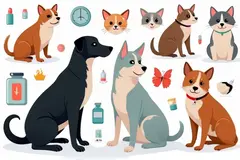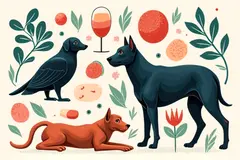 The immunity that is the result of either special lymphocytes directly killing the foreign invader, or lymphocytes (T cells) releasing special chemicals which activate macrophages to kill the invader. Compare with 'humoral immunity'.... ↪ Read more
The immunity that is the result of either special lymphocytes directly killing the foreign invader, or lymphocytes (T cells) releasing special chemicals which activate macrophages to kill the invader. Compare with 'humoral immunity'.... ↪ Read more Veterinary Drug Handbook (VDH) is the reference veterinarians turn to when they want an independent source of information on the drugs that are used in veterinary medicine today.
-
 Is veterinary Liniment Gel safe for humans?
Is veterinary Liniment Gel safe for humans? -
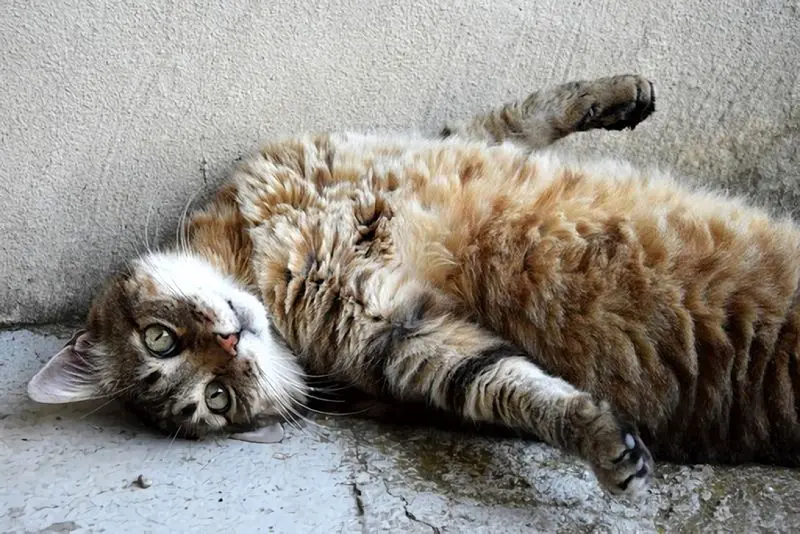 Giving Your Cat A Pill
Giving Your Cat A Pill -
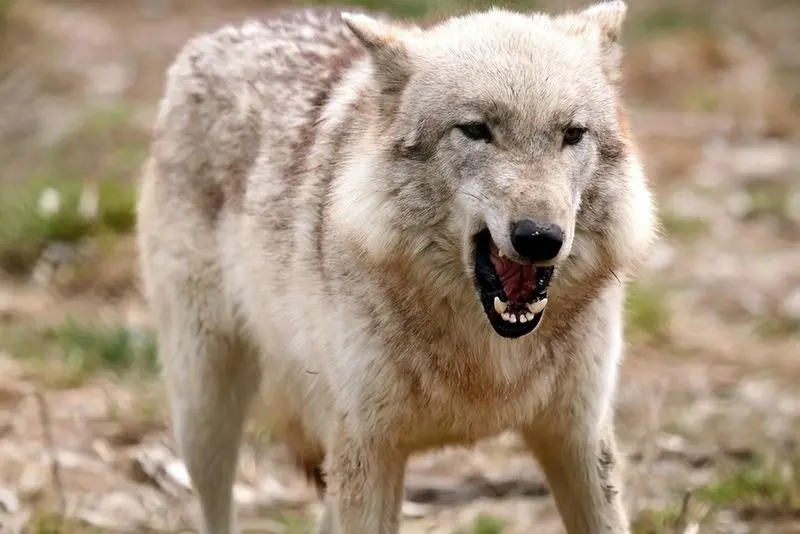 Dog Aggression
Dog Aggression -
 Dogs May Help Boost Infant Health
Dogs May Help Boost Infant Health -
 Animal-Assisted Therapy, Veterinary Social Work, & Social Work With People & Pets in Crisis
Animal-Assisted Therapy, Veterinary Social Work, & Social Work With People & Pets in Crisis -
 On-demand veterinary service gives advice on poorly pets
On-demand veterinary service gives advice on poorly pets -
 Should we stop throwing sticks for dogs?
Should we stop throwing sticks for dogs? -
 Can breathing in cat hair be harmful?
Can breathing in cat hair be harmful? -
 What does PU/PD mean in veterinary medicine?
What does PU/PD mean in veterinary medicine? -
 Bill calls for ban on sales of dogs, cats in Maine pet stores
Bill calls for ban on sales of dogs, cats in Maine pet stores -
 Common Meanings Of Cat Behavior
Common Meanings Of Cat Behavior -
 What does DVM stand for in veterinary?
What does DVM stand for in veterinary? -
 Curing Bad Cat Breath
Curing Bad Cat Breath -
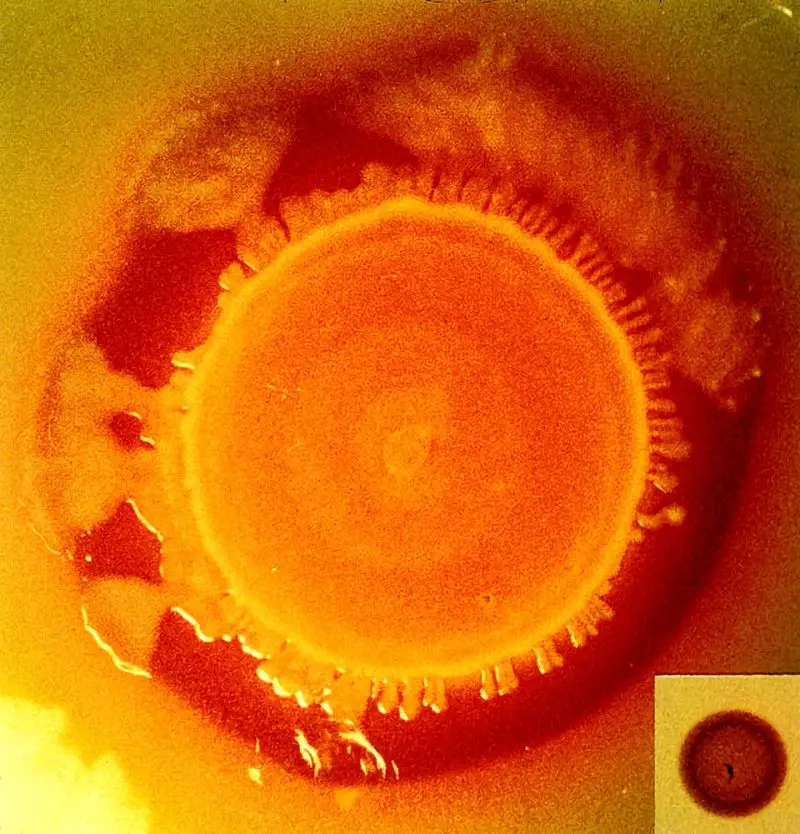 New Tracking Tool for Pathogen Investigators
New Tracking Tool for Pathogen Investigators -
Can binturongs be kept as pets?
-
 How long do instruments stay sterile after autoclaving veterinary?
How long do instruments stay sterile after autoclaving veterinary?
Cell-mediated immunity
 The immunity that is the result of either special lymphocytes directly killing the foreign invader, or lymphocytes (T cells) releasing special chemicals which activate macrophages to kill the invader. Compare with 'humoral immunity'.... ↪ Read more
The immunity that is the result of either special lymphocytes directly killing the foreign invader, or lymphocytes (T cells) releasing special chemicals which activate macrophages to kill the invader. Compare with 'humoral immunity'.... ↪ Read more Cecum
Cataract
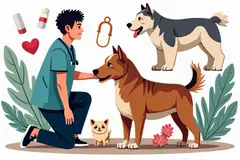 A cloudiness of the lens of the eye, reducing vision and giving the eye a pearly appearance. Any opacity of the lens from a dot to complete lens opacification. Abnormal cloudiness of the lens of the eye.... ↪ Read more
A cloudiness of the lens of the eye, reducing vision and giving the eye a pearly appearance. Any opacity of the lens from a dot to complete lens opacification. Abnormal cloudiness of the lens of the eye.... ↪ Read more Carrier
 Animal which harbors an infectious organism, such as a virus, bacteria or parasite. The animal does not appear ill but can still transmit the organism to other animals by direct contact or releasing the organisms (bacteria, protozoa, viruses) into the environment in the stool, urine, respiratory... ↪ Read more
Animal which harbors an infectious organism, such as a virus, bacteria or parasite. The animal does not appear ill but can still transmit the organism to other animals by direct contact or releasing the organisms (bacteria, protozoa, viruses) into the environment in the stool, urine, respiratory... ↪ Read more Carnivore
Cardiomyopathy
 Diseases of the heart muscle; does not include diseases of the valves of the heart or congenital defects. A disease of the heart muscle. Weak heart muscle cannot pump blood normally.... ↪ Read more
Diseases of the heart muscle; does not include diseases of the valves of the heart or congenital defects. A disease of the heart muscle. Weak heart muscle cannot pump blood normally.... ↪ Read more Carcinogen
Carbohydrate
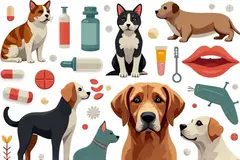 Compounds made up of chains of sugar units. Simple carbohydrates include table sugar (sucrose), milk sugar (lactose), and fruit sugar (fructose). Complex carbohydrates are very long chains held together by bonds that may not be digestible in the stomach and intestine of a carnivore. Starch is a... ↪ Read more
Compounds made up of chains of sugar units. Simple carbohydrates include table sugar (sucrose), milk sugar (lactose), and fruit sugar (fructose). Complex carbohydrates are very long chains held together by bonds that may not be digestible in the stomach and intestine of a carnivore. Starch is a... ↪ Read more Candida
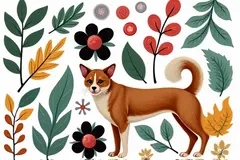 A certain genus of yeast which can cause disease in humans and animals; an infection with Candida is called candidiasis.... ↪ Read more
A certain genus of yeast which can cause disease in humans and animals; an infection with Candida is called candidiasis.... ↪ Read more Calorie
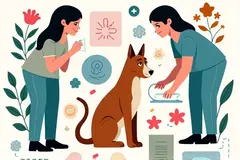 The unit of measurement of energy derived from digested food. Fat contains about twice as many calories per gram as protein or carbohydrate.... ↪ Read more
The unit of measurement of energy derived from digested food. Fat contains about twice as many calories per gram as protein or carbohydrate.... ↪ Read more Calcified
 The hardening of tissue through the influx of calcium, usually as a result of chronic inflammation.... ↪ Read more
The hardening of tissue through the influx of calcium, usually as a result of chronic inflammation.... ↪ Read more Cachexia
Popular Diagnoses
Packed cell volume (PCV, hematocrit) Reflex ovulator Mucolytic Microfilaricide Bronchodilator Hematocrit Glucocorticoid Monoamine oxidase inhibitor (MAOI) ↪ All veterinary diagnoseOther Diagnoses
Colitis Colostrum Coma Comedo Conception Congenital Corticosteroid Coumestan and coumestrolPopular Veterinary Clinics
VCA Welborn Animal Hospital, 7860 Washington Avenue Kansas City, KS 66112 USA MedVet Columbus, 300 East Wilson Bridge Road, Worthington, OH Rutland Veterinary Clinic & Surgical Center, 90 East Pittsford Road, Rutland, VT VCA Paradise Valley Emergency Animal Hospital, 6969 East Shea Boulevard Suite 150 Scottsdale, AZ 85254 USA Connecticut Veterinary Center & Pet ER, 470 Oakwood Ave West Hartford, CT 06110 USA Norway Veterinary Hospital, 10 Main St P.O. Box 273 Norway, ME 04268 USA Craig Road Animal Hospital, 5051 West Craig Road, Las Vegas, NV Abri Veterinary Hospital Inc, 1449 Trademart Boulevard Winston-Salem, NC 27127 USA ↪ All veterinary clinicsOther Veterinary Clinics
Quail Creek Veterinary, 2915 NW 122nd St. Oklahoma City, OK 73120 USA Pet Medical Center of Edmond, 1001 West 15th Street, Edmond, OK Pampered Pets Veterinary Clinic & Spa, 805 West Covell Road Suite 700 Edmond, OK 73003 USA Park Lane Veterinary Hospital, 1525 24th Avenue, SW Norman, OK 73072 USA VCA Veterinary Medical Center, 3129 S Winston Ave Tulsa, OK 74135 USA Small Animal Clinic of Tulsa, 4820 E 33rd Street Tulsa, OK 74135 USA VCA Cat Hospital of Tulsa, 5122 South Sheridan Road Tulsa, OK 74145 USA The Cat Doctor, 4407 SW Corbett Ave Portland, OR 97239 USAPopular Drugs
DOXYLAMINE SUCCINATE Doses - PENICILLIN V POTASSIUM Doses - METHYLPREDNISOLONE, METHYLPREDNISOLONE ACETATE, METHYLPREDNISOLONE SODIUM SUCCINATE ACEPROMAZINE MALEATE Doses - PREDNISOLONE, PREDNISOLONE SODIUM SUCCINATE, PREDNISOLONE ACETATE, PREDNISONE Doses - FURAZOLIDONE Doses - FERROUS SULFATE Doses - LEVAMISOLE ↪ All veterinary drugOther Drugs
Thyro-Tabs® (Levothyroxine sodium tablets, USP) Tablets Amoxi-tabs® (amoxicillin) TETRA-BAC 324 TETRACYCLINE HYDROCHLORIDE SOLUBLE POWDER 324 ANTIBIOTIC VITAMIN AD INJECTION DEXAMETHASONE INJECTION 2 mg/mL TUCOPRIM® (trimethoprim and sulfadiazine) Dexasone® Dexamethasone Sterile Injection 2 mg/mL Directions For UsePopular Terms
Subalbinotic Steatis Uteroverdin Paradoxical CSF acidosis Figure of 8 suture pattern Nerve root signature Ovariohysterectomy Abrev OVH Signalment ↪ All veterinary termOther Terms
Adjuvants Adnexa Adrenal gland Adrenaline Adverse event Adverse reaction to food Aerobic bacteria Age specific data baseveterinary-help.com
© 2011-2025 Veterinary Clinics, Diagnoses, Terms and Drug Handbook Online




